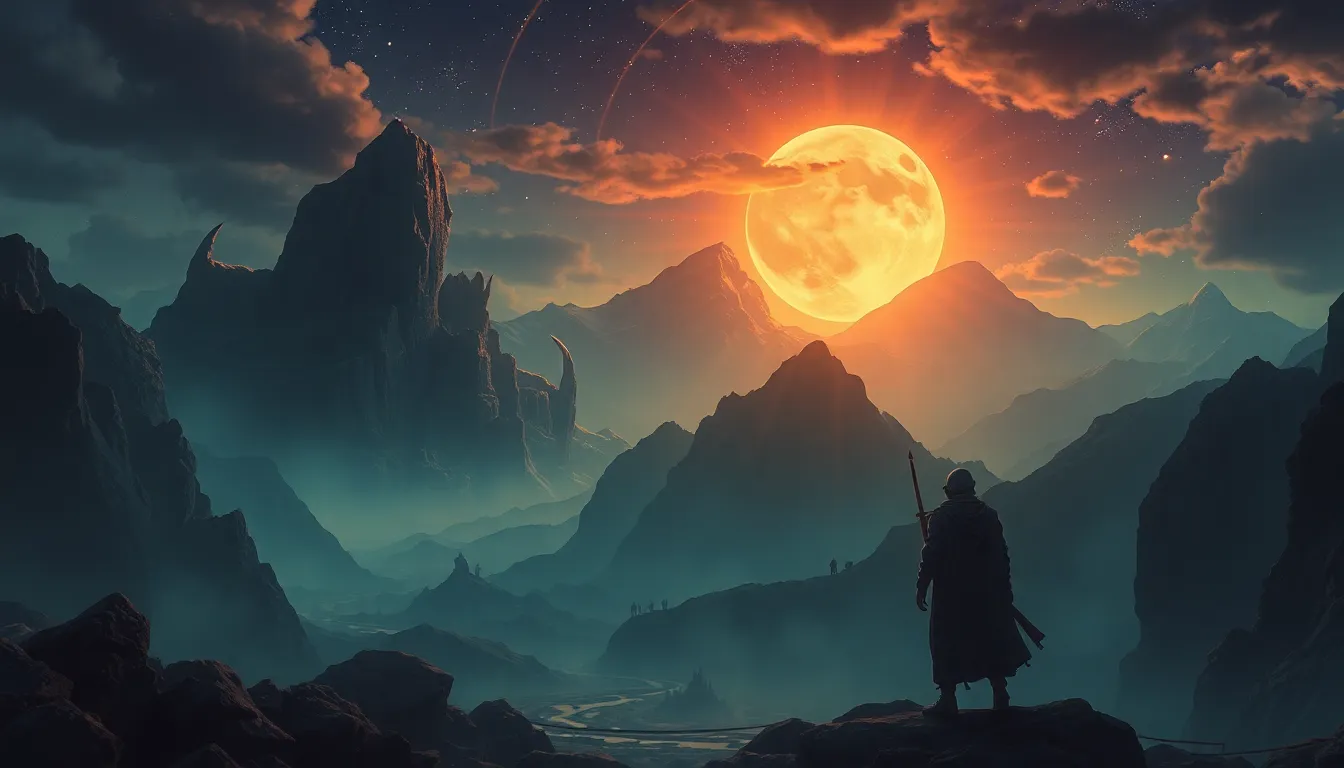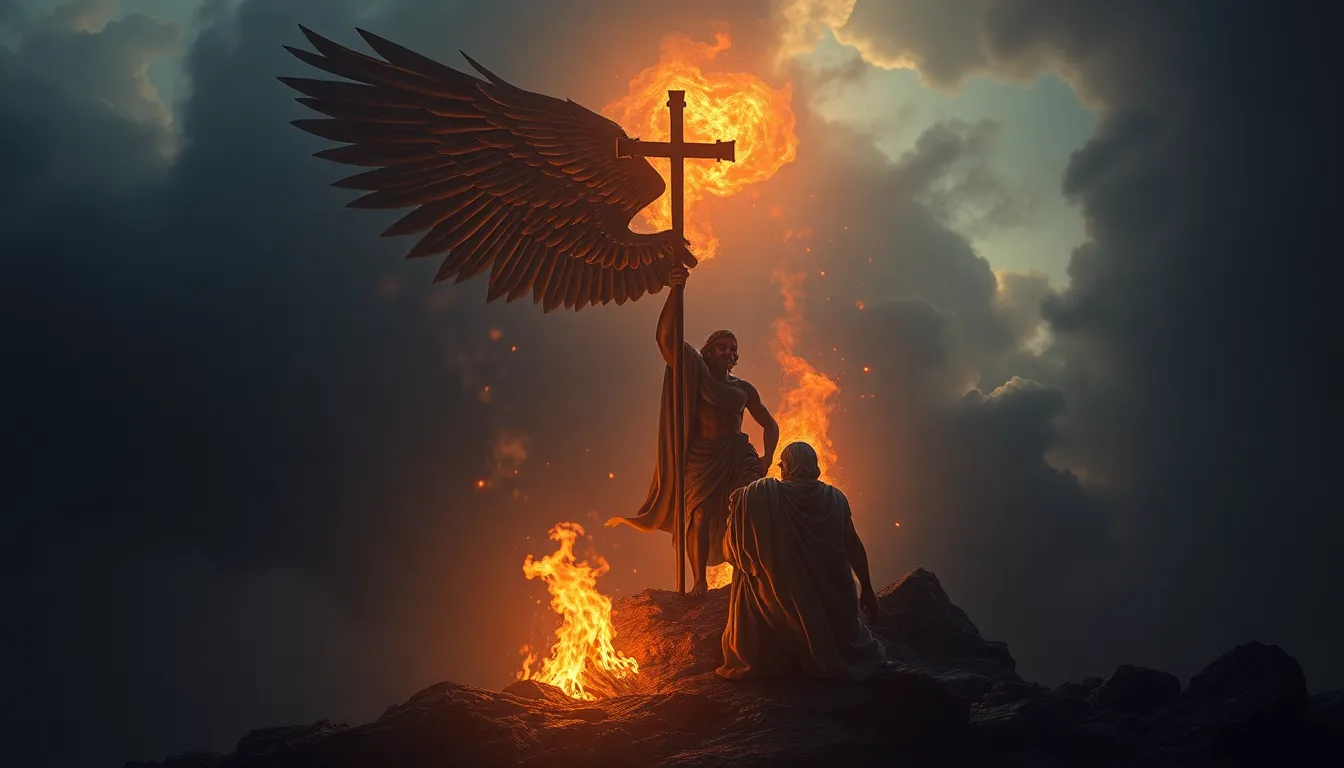The Underworld: Where Myth Meets Reality
Introduction: Defining the Underworld
The concept of the Underworld has fascinated humanity for centuries, featuring prominently in the mythologies and religions of various cultures. It represents a realm that exists beneath the earth, often associated with the afterlife and the fate of souls. This duality of myth and reality invites exploration, as it reflects both human fears and hopes regarding death and the unknown.
In many cultures, the Underworld serves as a complex symbol of transition, replete with its own rules, deities, and narratives. While it is often depicted as a place of darkness and despair, it also embodies themes of transformation and renewal, revealing the multifaceted nature of human beliefs about life after death.
Cultural Perspectives on the Underworld
Ancient mythologies offer rich and varied interpretations of the Underworld. For instance:
- Greek Mythology: The Underworld, ruled by Hades, is divided into various regions, including the Elysian Fields for the virtuous and Tartarus for the wicked.
- Roman Mythology: Similar to the Greeks, the Romans viewed the Underworld as a shadowy realm, with the god Pluto overseeing the souls of the deceased.
- Egyptian Mythology: The Underworld, known as Duat, is a complex realm where the deceased undergo trials before reaching the afterlife, guided by the god Osiris.
In modern religions, the Underworld takes on different forms:
- Christianity: Heaven and Hell serve as the ultimate destinations for souls, with Hell often viewed as a form of eternal punishment.
- Islam: The concept of Jahannam represents a place of torment for those who have sinned, highlighting a moral dichotomy.
- Hinduism: The Underworld, or Naraka, is a temporary abode for souls before they are reborn, emphasizing the cycle of life, death, and rebirth.
Symbolism and Themes Associated with the Underworld
The Underworld is rich in symbolism, often associated with:
- Darkness: A common representation of the unknown, fear, and the unconscious.
- Travel: The journey to the Underworld often symbolizes the transition from life to death.
- Transformation: The Underworld serves as a crucible for the soul, leading to rebirth or enlightenment.
Common themes that emerge in the mythology of the Underworld include:
- Death: A universal experience that is often depicted as a journey.
- Rebirth: Many cultures view the Underworld as a necessary step toward renewal.
- The Afterlife: Diverse beliefs about what happens after death reflect cultural values and fears.
The Underworld in Literature and Art
Literature has long depicted the Underworld in various forms. Notable works include:
- Dante’s “Inferno”: A detailed narrative of Hell that explores sin and redemption through vivid imagery.
- Virgil’s “Aeneid”: Aeneas’s descent into the Underworld is a poignant exploration of fate and duty.
Artistic representations also capture the essence of the Underworld:
- Hieronymus Bosch: His paintings, such as “The Garden of Earthly Delights,” portray intricate scenes of heaven, earth, and hell.
- “The Matrix”: A modern interpretation that reflects the journey from ignorance to enlightenment, paralleling traditional Underworld narratives.
Archaeological Discoveries and Historical Insights
Archaeological findings have unveiled insights into ancient beliefs about the Underworld. Discoveries from burial sites, such as:
- Grave goods that indicate a belief in an afterlife.
- Elaborate tombs that reflect the importance of honoring the dead.
These findings show how mythology shaped historical narratives about the afterlife, providing a glimpse into the cultural values of ancient civilizations.
Psychological Interpretations of the Underworld
In psychology, particularly through Jungian perspectives, the Underworld is viewed as a representation of the unconscious mind. It symbolizes:
- Inner fears and struggles.
- The process of personal transformation and growth.
Modern psychology often interprets the Underworld metaphorically, representing challenges that lead to self-discovery and enlightenment.
Modern Interpretations and Representations of the Underworld
In contemporary culture, the Underworld appears in various forms, such as:
- Video Games: Titles like “Hades” and “God of War” explore themes of death and redemption through immersive storytelling.
- Movies: Films such as “What Dreams May Come” depict the afterlife in visually stunning ways, reflecting societal beliefs about death.
The evolution of the Underworld concept in popular media highlights its enduring relevance and the complex relationship society has with mortality.
Philosophical Reflections on Life and Death
Philosophical inquiries into the nature of existence often touch upon the Underworld. Various traditions offer interpretations, including:
- Existentialism: Questions the meaning of life and the inevitability of death.
- Eastern Philosophy: Explores concepts of reincarnation and the cyclical nature of existence.
These reflections reveal how different philosophical traditions interpret the myth of the Underworld, providing insights into human existence.
The Underworld and Environmental Reflections
Connections between myths of the Underworld and contemporary environmental issues are increasingly relevant. The Underworld can symbolize:
- Ecological devastation, reflecting humanity’s impact on the planet.
- Renewal and rebirth, echoing themes of regeneration in nature.
These reflections prompt us to reconsider our relationship with the environment and the consequences of our actions on future generations.
Conclusion: Bridging Myth and Reality
The exploration of the Underworld across various disciplines reveals its complexities and enduring relevance. From ancient mythologies to modern interpretations, the Underworld serves as a powerful symbol of human existence, encapsulating our fears, hopes, and aspirations regarding life and death. As we continue to navigate the mysteries of our existence, the Underworld remains a profound narrative that bridges the gap between myth and reality.



